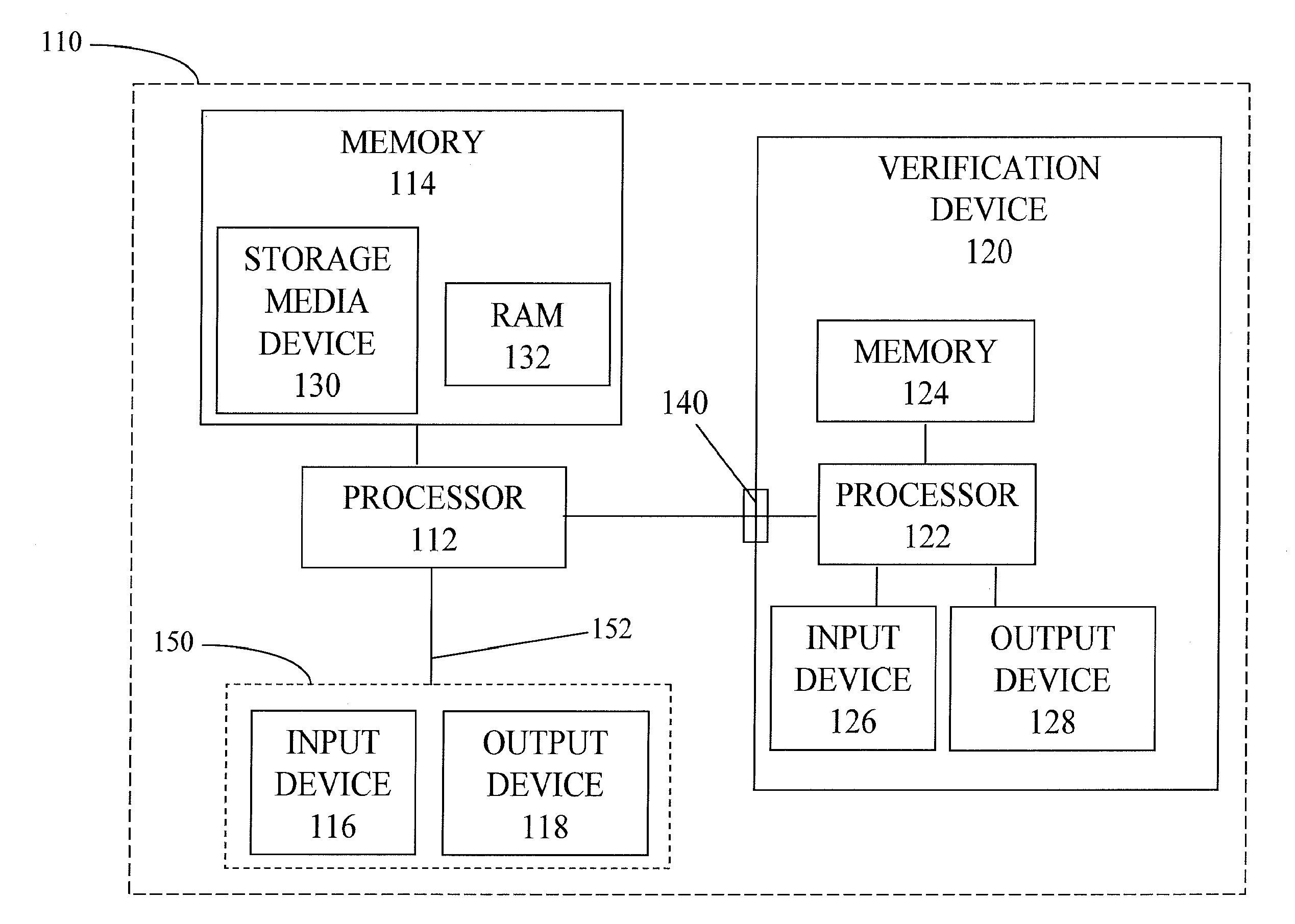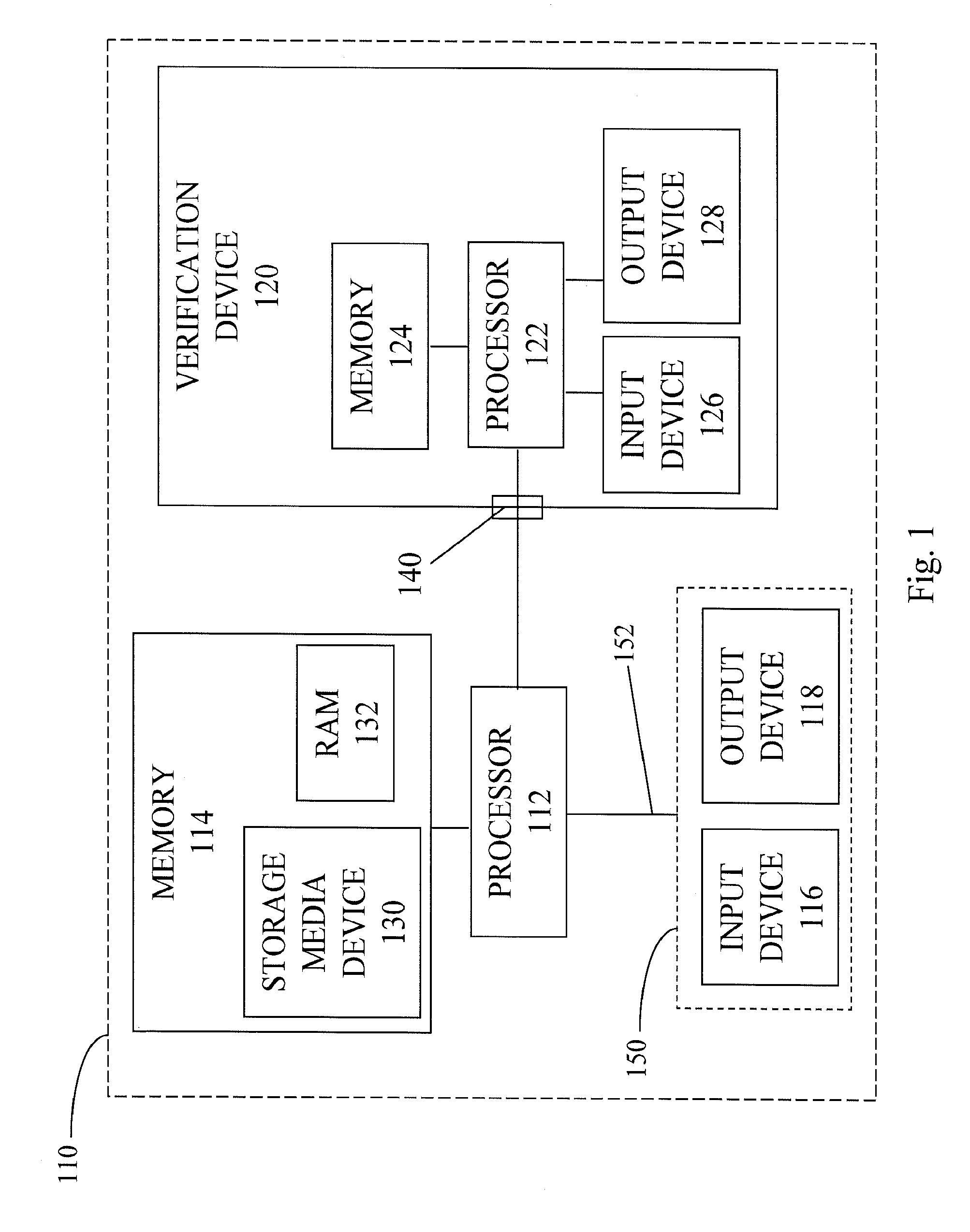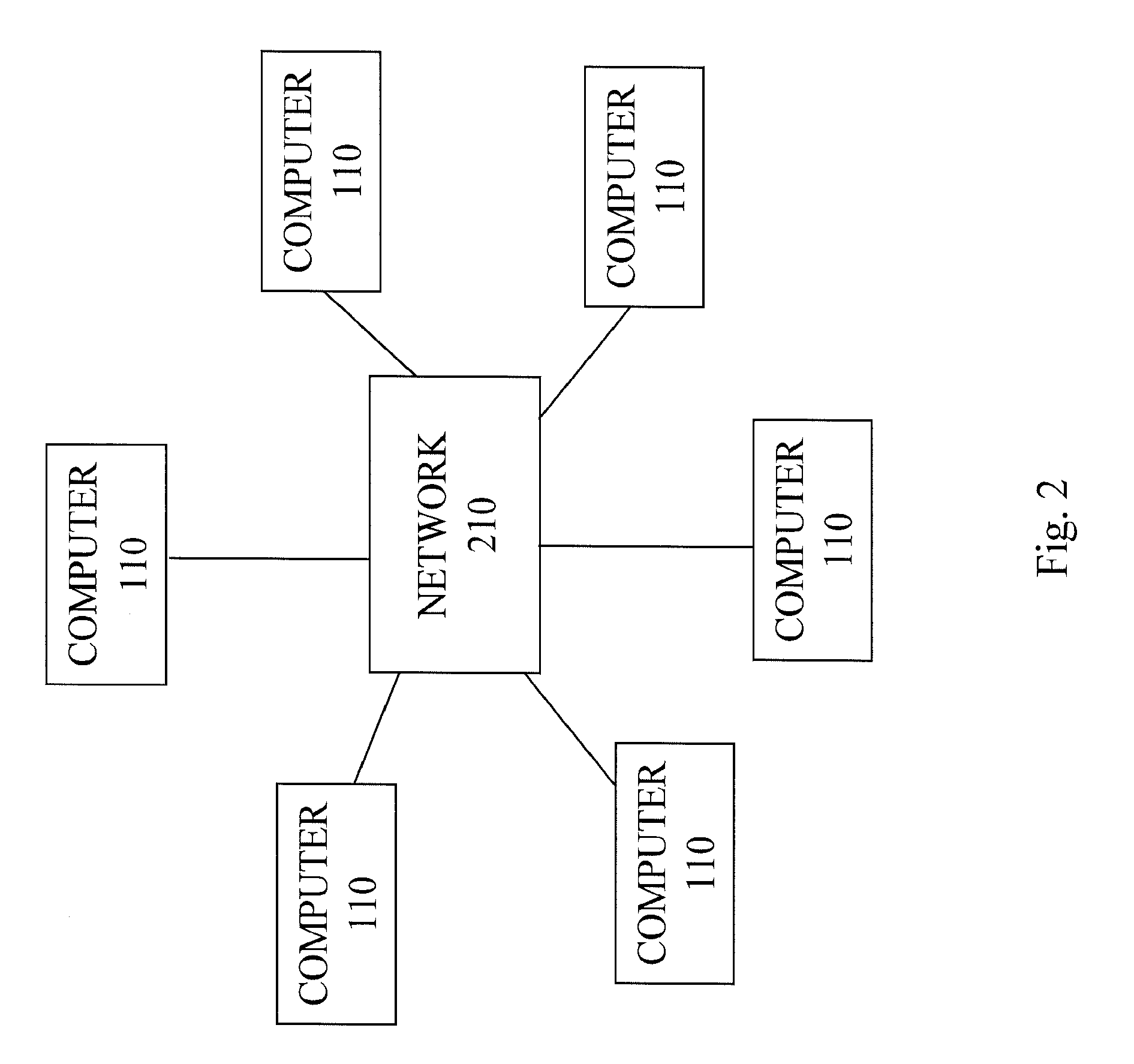Methods and apparatuses for user-verifiable trusted path in the presence of malware
a trusted path and malware technology, applied in the field of methods and apparatuses for user-verifiable trusted paths in the presence of malware, can solve the problems of inability to connect such systems to the internet all but, and neither of these assumptions are reasonable for commercial off-the-shelf operating systems used in large enterprises. to achieve the effect of improving the resistance to attacks
- Summary
- Abstract
- Description
- Claims
- Application Information
AI Technical Summary
Benefits of technology
Problems solved by technology
Method used
Image
Examples
Embodiment Construction
[0033]FIG. 1 illustrates one embodiment of a computer 110 according to the present invention. In that embodiment, the computer 110 includes a processor 112, memory 114, an input device 116, an output or display device 118, and a verification device 120. The processor 112 is connected to the memory 114, the input device 116, and the output device 118. The memory 114 includes computer readable instructions, such as computer hardware, software, firmware, or other forms of computer-readable instructions which, when executed by the processor 112, cause the processor 112 to perform certain functions, as described herein. The computer 110 may also include one or more other devices not shown herein. Although this embodiment is illustrated with the verification device 120 as part of the computer 110, the verification device 120 may be separate from the computer 110.
[0034]The processor 112 receives input from the input device 116, provides signals to control the output device 118, and provide...
PUM
 Login to View More
Login to View More Abstract
Description
Claims
Application Information
 Login to View More
Login to View More - R&D
- Intellectual Property
- Life Sciences
- Materials
- Tech Scout
- Unparalleled Data Quality
- Higher Quality Content
- 60% Fewer Hallucinations
Browse by: Latest US Patents, China's latest patents, Technical Efficacy Thesaurus, Application Domain, Technology Topic, Popular Technical Reports.
© 2025 PatSnap. All rights reserved.Legal|Privacy policy|Modern Slavery Act Transparency Statement|Sitemap|About US| Contact US: help@patsnap.com



